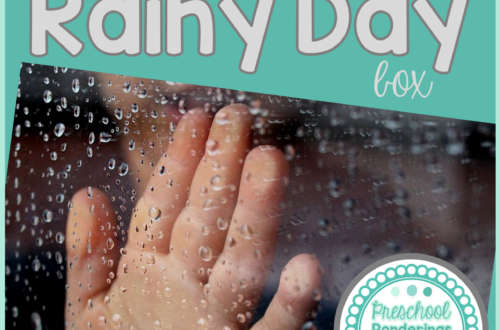A flexible schedule in the preschool classroom
The words flexible and schedule don’t really seem like they should go together. Schedules aren’t generally flexible, but in preschool they should be. So what exactly is a flexible schedule? It’s a daily routine that has a some wiggle room. This lets the teacher follow the needs and interests of the children so that the entire group gets the opportunity to take advantage of teachable moments.
Have you ever had an entire group of children working together to build a magnificent city in the block area, and you had to tell them that it was time to put it all away so that they could come to circle time? As a teacher, it hurts to tell the children to stop what they’re doing, especially when you know that they are learning so much from working collaboratively. This is where the flexible schedule comes in.
If you can see the what the children are doing, then don’t stop them. Let the children continue to work until you observe a natural end to their play (there always is one). Then you can do circle time. Yes, it will be later in the day, and yes, you probably will not have time for your planned centers afterward. Those activities can be revisited another day. A flexible schedule allows you sift the pieces and parts of your day so that you can fit in what means the most to the children.
Now, I fully appreciate the great aspects of following a schedule closely. I know that routines are important and that they help children in many, many ways. I’m not saying that you should throw your schedule out the window, and I’m not saying that you should change your schedule every single day. I’m just saying that it’s good to be flexible.
Think about the example of the children in the block area. If you ask them to stop their work and sit down for circle, they aren’t likely to be especially engaged in circle time because they will still be thinking about the work they had been doing. On the other hand, if you approach the group and say”I know it’s time to clean up, but you are all working so hard. Would you like to keep working and do circle a little later?” Now you have not only given the children the opportunity to choose what they would like to do, you’ve also showed them that you respect and value the work they are doing enough to change your schedule so that it can continue. That is a very powerful message!
Flexible schedules are good for more than just extending free play. They also give you opportunities to explore themes and topics that you can’t plan for. I have more examples of this than I can count, but here’s the first one that I thought of; When my kiddos got to school in the morning after we’d had a small tornado and wide-spread power outages, each child wanted to share their own storm story. Instead of doing a formal circle time, I sat down with the children and we just talked. They told each other what had happened at their home, and asked all kinds of questions. I answered as many as I could, and when it became clear that this was not going to be a short conversation, I got out some resources. We looked at books with photos of storms, and we watched a weather report on the iPad, then each of the children drew a picture of the storm that they had seen.
We didn’t do any of the small group activities that I had planned for that morning, but the children had plenty of time to increase their understanding of what had happened the night before. They learned about storms, weather, and different points of view. They were able to listen to each other and use all of these stories to form new connections. A flexible schedule allows opportunities for these kinds of teachable moments.
Having a flexible schedule doesn’t mean that your class has no routine. It doesn’t mean that the children always get to choose what they want to do and when they want to do it. It simply means that your regular schedule has the ability to change in order to meet the needs of the children.





